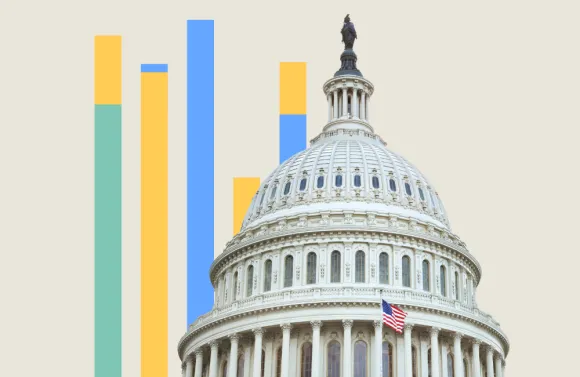Supreme Court Ruling Will Impact Future Health Care Lawsuits, Regulations and Legislation

Over the past decade or so, we have seen an increase in lawsuits filed against a Federal regulation claiming that the Federal Department that drafted the regulation exceeded their authority and developed rules and requirements that are inconsistent with the statute and Congress’s original intent. Based on my – and other analysts’ – observations, a lawsuit attempting to strike down or nullify a Federal regulation is the “new normal” these days.
By way of example, most recently, we saw not one, but four lawsuits challenging regulations implementing the new Federal surprise billing rules. These lawsuits have caused significant disruption to those stakeholders (i.e., both the payers and providers) that are required to follow a process that Congress directed the Federal Departments to develop through regulations.
We have also seen a number of lawsuits filed against Trump-era health care regulations, including regulations requiring hospitals to post medical prices on a public website through a machine-readable file (MRF).
And prior to that, we saw lawsuits filed against various regulations implementing the Affordable Care Act (ACA), including a lawsuit seeking to nullify a regulation that clarified that individuals could access the ACA’s premium subsidies through Healthcare.gov (and not just a State-based Exchange).
The Chevron Deference Doctrine
In some of these lawsuits – and many other non-health care-related challenges to a Federal regulation – a court of law upheld the challenged Federal regulation by “deferring” to the Federal Department’s interpretation of the statute the Department was implementing through the regulation. Here, the court followed a judicial precedent called the “Chevron Deference Doctrine,” a 40-year-old precedent directing courts to uphold a Federal regulation if evidence shows that the Federal Department reasonably interpreted the statute, even if the court disagrees with how the statute was interpreted.
This so-called deference to the Federal Departments has effectively allowed prior Administrations (both Democrat and Republican) to incorporate their own policies into Federal regulations. Many of us analysts call this “legislating through regulations.”
But, in some ways, the Chevron Deference Doctrine is not all that bad. What I mean here is that this judicial Doctrine recognizes that the Federal Departments – and not the courts – have the requisite expertise to implement a complex law impacting a complex industry (like health care).
This judicial Doctrine also recognizes that Congress doesn’t always write the clearest laws, and that Congress’s choice of words when writing legislation creates ambiguities and holes in the statute that only experts employed by the Federal Departments can clarify and fill-in through implementing regulations. Giving the ultimate interpretive authority to a court of law may effectively allow the court to make its own public policy. Many of us analysts call this “legislating through a court ruling.”
Supreme Court Overturns the Chevron Deference Doctrine
In what many would argue is a monumental shift, the Supreme Court handed down a 6 to 3 ruling overturning the Chevron Deference Doctrine on June 28.
In some corners of the health care industry, they are heralding this ruling as putting a stop to an Administration’s ability to “legislate through regulations.” Others are concerned that by dismantling this judicial Doctrine, courts will have too much power and they will effectuate their own policy goals by “legislating through a court ruling.”
More Lawsuits
To be sure, there will be an increase in lawsuits filed against Federal regulations, which will make the “new normal”…well…that much “more normal.”
Importantly though, Supreme Chief Justice Roberts confirmed that this June 28 ruling is prospective ONLY, meaning reliance on the Chevron Deference Doctrine in prior lawsuits will NOT be impacted by the Supreme Court’s recent decision. This will at least limit the onslaught of lawsuits that many experts were anticipating prior to the release of this ruling.
However, this will NOT stop lawsuits from being filed against existing regulations that have not yet been challenged in court. Think of regulations issued by the Biden Administration over the past 3 ½ years implementing the Inflation Reduction Act (e.g., regulations implementing Medicare price negotiations), and even Trump-era regulations that certain stakeholders did not challenge for fear of losing on account of Chevron Deference (e.g., the Transparency in Coverage Rule).
Also, think about lawsuits against regulations that are already in the pipeline to be released (e.g., proposed Mental Health Parity regulations that are about to go final). Not to mention, any regulations that the next Administration (whether it is a Biden 2nd Term or another Trump Presidency) develops and releases.
Writing Federal Regulations and Legislation Will Be Harder
Going forward, the Federal Departments will have little leeway when it comes to interpreting an ambiguous statute or a statute in which Congress directs the Department to develop rules based on a series of steps or a set of guidelines. This means Department officials will not be able to rely on their expertise to help make poorly drafted legislation work in practice, and the Department will not be able to act on the authority Congress gave to them to draw from their expertise to round out legislatively mandated requirements.
This will also put immense pressure on Congress when writing and considering legislation that serves as the underlying statute that a Federal Department must implement through a regulation. Congress will have to be much more precise in the words they use to create or amend a statute. Congress also won’t be able to direct the Federal Departments to develop a regulatory process without very specific guidelines or parameters spelled out in the underlying statute. And, it is likely that Congress will not be able rely on the Federal Departments to fill-in-the-blanks that Congress inadvertently or purposefully left open.
The information provided does not, and is not intended to, constitute legal advice; instead, all information and content herein is provided for general informational purposes only and may not constitute the most up-to-date legal or other information. This summary is provided by a consultant to Benefitfocus.com, Inc., and any opinions expressed within do not necessarily reflect those of Benefitfocus.com, Inc. or its affiliates and are not intended to provide specific advice or recommendations for any plan or individual.



